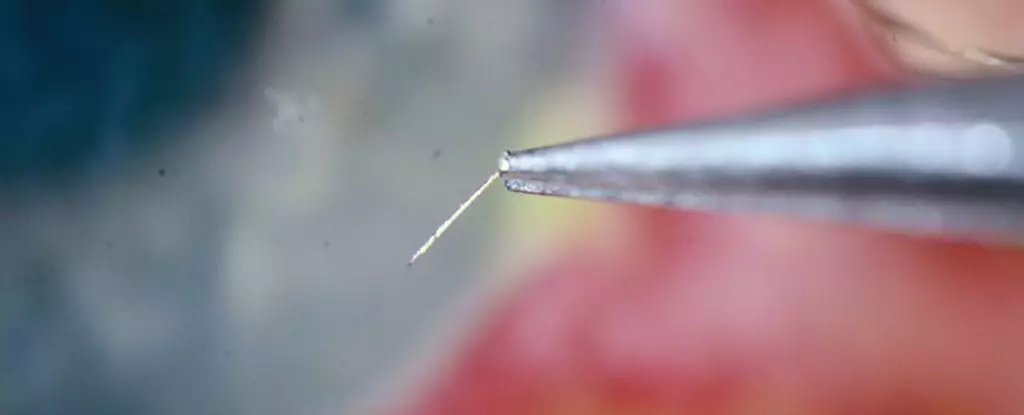Getting stung by a bee is already painful and unpleasant, but imagine getting stung in the eyeball. A case study from Wills Eye Hospital in Philadelphia detailed the unfortunate experience of a 55-year-old man who had a barbed bee stinger stuck in his right eye. The incident led to a series of events that caused significant pain and damage to his vision.
The man sought help at an emergency department on the day of the sting, where medical staff attempted to remove the stinger but were unsuccessful in their efforts. Although they thought they had taken out the entire barb, a significant portion of it remained embedded in the patient’s iris. Two days later, the man’s condition had worsened, with severe pain, bleeding vessels in the iris, and impaired vision.
Fearing for his vision, the man visited an ophthalmology clinic where specialists utilized fluorescent dye to identify the foreign object in his eye. Under a specialized microscope, they discovered a tiny, piercing object lodged between the iris and the sclera. The cornea was also inflamed and swollen, adding to the severity of the situation.
Using jeweler’s forceps, ophthalmologists were able to extract the remaining foreign object from the man’s eye. He was then prescribed eyedrops containing antibacterial medication and steroids to reduce inflammation and promote healing. Five months post-treatment, his vision had improved to a near-perfect 20/25.
The doctors at Wills Eye Hospital emphasized the importance of seeking immediate care from an ophthalmologist following an ocular bee sting. The barbed stingers of bees and wasps can cause significant tissue damage to the eye and release venom that triggers inflammation. In some cases, part of the bee’s abdomen can remain in the eye if the insect is ripped off its stinger during the sting.
While removing the stinger can help alleviate symptoms and prevent further damage, it may not always be necessary or advisable. In some instances, leaving the stinger in place can be less harmful, especially if it requires surgical intervention to remove. Despite the risks, there have been cases where good vision is maintained despite the presence of a foreign object in the eye.
The story of the man who got stung in the eye by a bee serves as a cautionary tale about the potential dangers of such an incident. Seeking prompt medical attention from an ophthalmologist is crucial in preventing long-term complications and preserving vision. The expertise of healthcare professionals in handling ocular injuries can make a significant difference in the outcome for patients who face similar unfortunate situations.


Leave a Reply